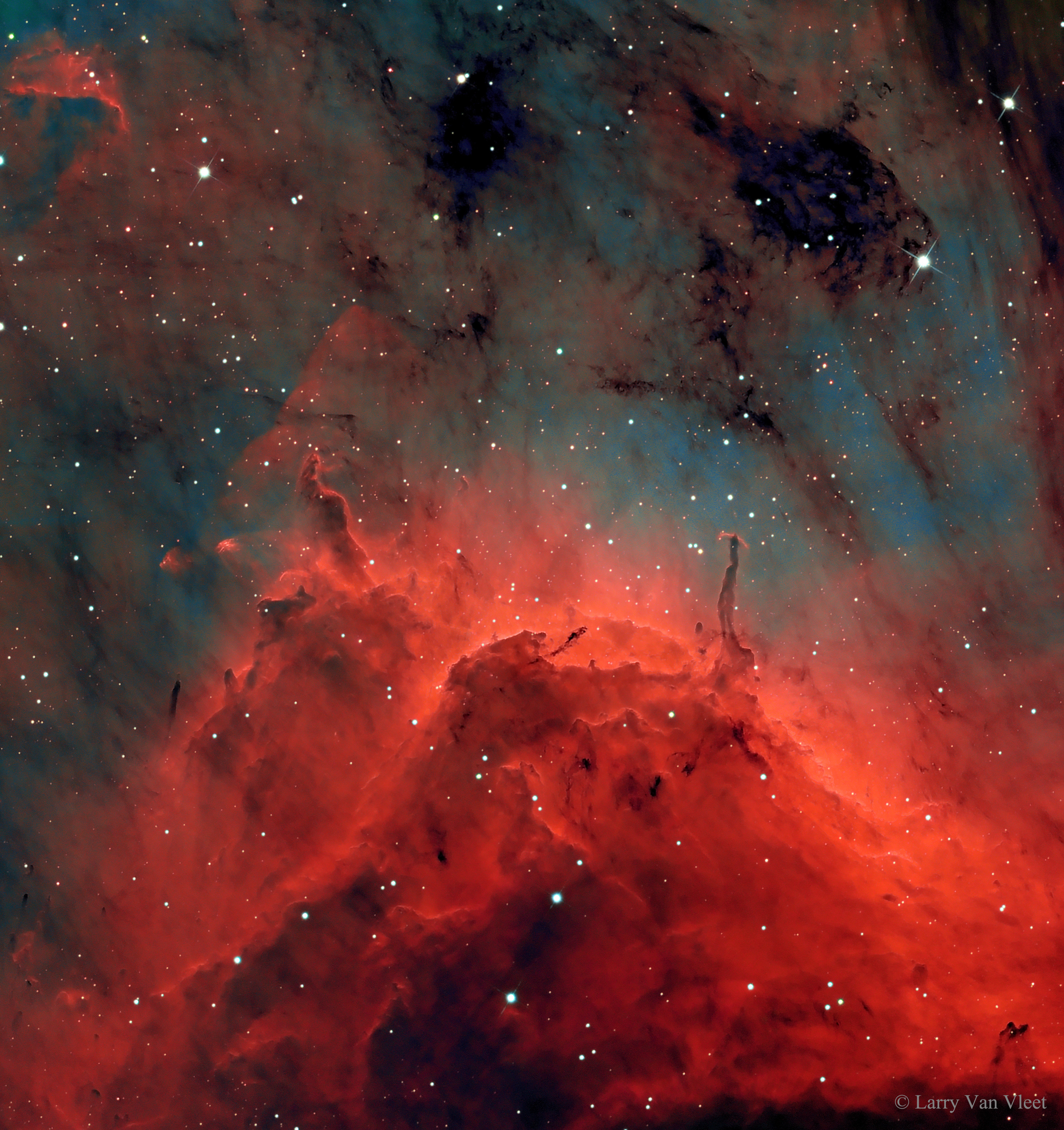
Copyright:
Larry Van Vleet
(LVVASTRO)
原文:
What dark structures arise from the Pelican Nebula? Visible as a bird-shaped nebula toward the constellation of a bird (Cygnus, the Swan), the Pelican Nebula is a place dotted with newly formed stars but fouled with dark dust. These smoke-sized dust grains formed in the cool atmospheres of young stars and were dispersed by stellar winds and explosions. Impressive Herbig-Haro jets are seen emitted by a star on the right that is helping to destroy the light year-long dust pillar that contains it. The featured image was scientifically-colored to emphasize light emitted by small amounts of ionized nitrogen, oxygen, and sulfur in the nebula made predominantly of hydrogen and helium. The Pelican Nebula (IC 5067 and IC 5070) is about 2,000 light-years away and can be found with a small telescope to the northeast of the bright star Deneb.
中文翻譯:
在天鵝座(Cygnus)的北方,有一個美麗的星雲——鵝頭星雲(Pelican Nebula),它的形狀就像一隻鳥。該星雲裡布滿了新生的恆星,卻也被黑暗的塵埃所掩蓋。這些煙霧般大小的塵埃顆粒是來自年輕恆星的冷卻大氣層中形成的,並且被恆星風和爆炸所散佈。
圖片中可以看到壯觀的赫比-哈羅(Herbig-Haro)噴流,這是來自星雲一側的一顆恆星所發出的,這顆恆星正幫助摧毀那個包含它的長達一光年的塵埃柱。圖片經過科學著色,以強調在以氫和氦為主的星雲中,少量的離子化氮、氧和硫所發出的光。鵝頭星雲(IC 5067和IC 5070)距離地球約2000光年,透過小型望遠鏡可以在明亮的恆星Deneb的東北方向找到。
#PelicanNebula #IC5067 #IC5070 #Cygnus #HerbigHaro #Astrophotography #StarFormation #AstronomyLovers #SpaceArt #CosmicWonder
來源:NASA每日圖片


